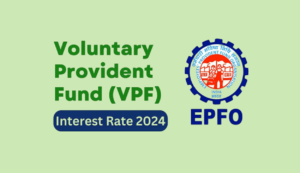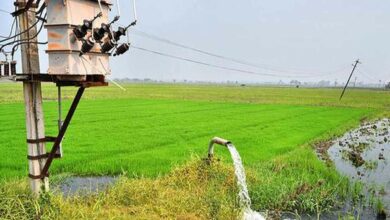VPF Scheme: Big news for EPFO Members, Know the complete details
VPF Scheme: A unique reform under the Employees’ Provident Fund Organization (EPFO) is being contemplated by the government. It is thinking of raising the present Rs 2.5 lakh tax-free contribution cap to the Voluntary Provident Fund (VPF) under this organization. Any interest generated above Rs 2.5 lakh is now subject to taxation. The program’s goal is to motivate middle-class and lower-class people to use EPFO to boost their savings. More money will be raised for retirement as a result.

According to sources with knowledge of the situation, the Ministry of Labor is now examining the suggestion and may speak with the Finance Ministry about it during the FY 2026 budget discussions, according to the Economic Times story that was carried on Business Today.
Voluntary Provident Fund: What is it?
In addition to the required EPF, paid workers may also invest in VPF. It is an extension of the Employee Provident Fund (EPF) that enables workers to increase their retirement funds while earning interest at the same rate as their initial PF contributions. Contributions to VPF increase at the compound interest rate, much like EPF, since rewards are paid out annually. It falls under EPFO as well.
Customers of the VPF should be aware that any withdrawals made before the five-year minimum term is over may be taxed. Similar to EPF, VPF funds are distributed to the designated beneficiary upon retirement, resignation, or the account holder’s untimely death.
How much Interest do you get on EPF Account?
The fact that VPF is a government-run program with minimal risk and excellent rewards is one of its characteristics. Its contribution exceeds the 12 percent that each employee contributes to his EPFO account. The maximum contribution is equal to one hundred percent of the dearness allowance plus base pay. Interest is offered under this plan at the same rate as the EPF.
What is the Tax-Free Amount?
In order to stop high-income workers from taking use of the opportunity to earn more tax-free interest than banks or fixed deposits provided, the FY22 budget set a cap of Rs 2.5 lakh on voluntary contributions. High-income workers who were utilizing the facility to earn more tax-free interest than banks or fixed deposits were the target of the move.
Fund of About Rs 20 Lakh Crore
With over 7.5 million pensioners, 70 million monthly donations on average, and a fund of about Rs 20 lakh crore, EPFO is a large organization. Employees who want to participate in the Voluntary Provident Fund (VPF) may increase their contributions via EPFO. An employee has the option to ask his company to take out more money than the required 12% contribution. With the same interest rate as the basic contribution, the maximum contribution to VPF may be 100% of the basic pay plus dearness allowance.
VPF is often classified as an exempt-exempt-exempt tax. This indicates that there is no tax on the contributions, interest, or maturity funds. Under Section 80C of the previous tax system, EPF payments up to Rs 1.5 lakh per fiscal year are tax deductible. Employees are exempt from paying extra taxes on contributions up to Rs 2.5 lakh made to the VPF each year. Additionally, the provident fund’s withdrawals and maturity revenues are tax-free.
Interest Rates for VPFs
Since FY78, EPFO has offered interest rates over 8%. In FY90, they peaked at 12% and remained there for 11 years, until FY2000. For FY22, FY23, and FY24, the interest rate on PF savings was 8.10%, 8.15%, and 8.25%, respectively.
EPF and VPF Savings
You may invest Rs 2.5 lakh annually by investing Rs 20,833 every month in VPF and EPFO. At the same time, you may deposit almost Rs 3.3 crore over 30 years at an annual return rate of 8.25%.





